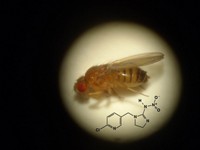Advertisement
Grab your lab coat. Let's get started
Welcome!
Welcome!
Create an account below to get 6 C&EN articles per month, receive newsletters and more - all free.
It seems this is your first time logging in online. Please enter the following information to continue.
As an ACS member you automatically get access to this site. All we need is few more details to create your reading experience.
Not you? Sign in with a different account.
Not you? Sign in with a different account.
ERROR 1
ERROR 1
ERROR 2
ERROR 2
ERROR 2
ERROR 2
ERROR 2
Password and Confirm password must match.
If you have an ACS member number, please enter it here so we can link this account to your membership. (optional)
ERROR 2
ACS values your privacy. By submitting your information, you are gaining access to C&EN and subscribing to our weekly newsletter. We use the information you provide to make your reading experience better, and we will never sell your data to third party members.
Environment
Arsenic Speciation Key To Poisoning Risk
Dermal exposure to arsenic compounds highly depends on the chemical form of the toxic substances
by Jyllian N. Kemsley
May 10, 2010
| A version of this story appeared in
Volume 88, Issue 19
Drinking or inhaling arsenic compounds may not be the only ways to be poisoned by the toxic substances: Exposure through the skin may also be a problem, report Sairoong Ouypornkochagorn and Jörg Feldmann of the University of Aberdeen, in Scotland (Environ. Sci. Technol., DOI: 10.1021/es903667y). Dermal exposure to arsenic is a particular concern for farmers working in fields irrigated with water containing naturally occurring arsenic, such as in Asian rice paddies. Historically, arsenic exposure through the skin was thought to be a low risk, but that was based on studies of arsenate (AsO4 3–). Arsenite (AsO3 3–), however, is the dominant species in rice paddies. Ouypornkochagorn and Feldmann used abdominal skin from a human cadaver to compare rates of transmission of arsenate, arsenite, dimethylarsinic acid [(CH3)2As(O)OH], and arsenosugars from seaweed through the skin. They found that arsenosugars penetrate the skin at a rate similar to arsenate’s, but that arsenite goes through 29 times faster and dimethylarsinic acid passes through 59 times faster. Although the researchers worked with a single piece of skin and arsenic species penetration might vary from person to person and between different body parts, they say the results point to the need to consider arsenic speciation when evaluating exposure risks.




Join the conversation
Contact the reporter
Submit a Letter to the Editor for publication
Engage with us on Twitter